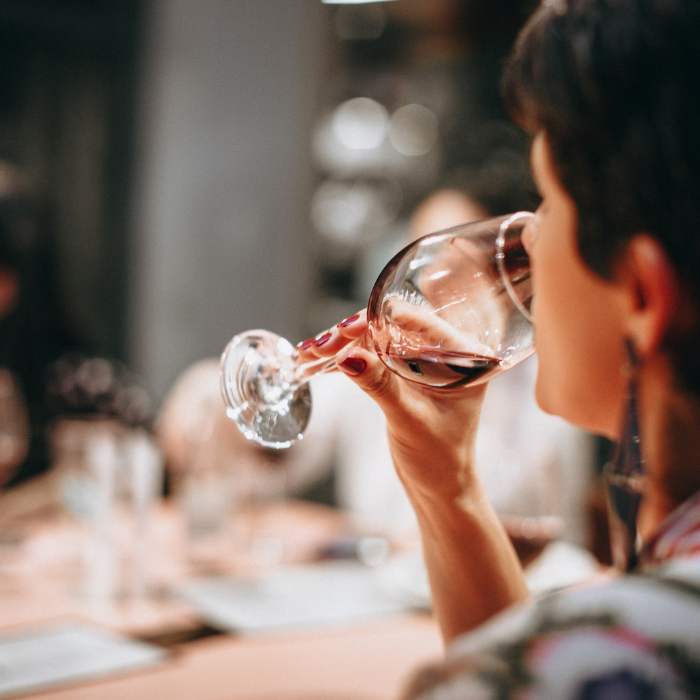Top 10 Wine Tips from a Sonoma County Winemaker
As a Sonoma County resident and longtime winemaker, I am both excited and apprehensive to share my top 10 wine tips.
As you may know, my enthusiasm for all things wine is legendary. Yet I am equal parts hesitant, since the topic is so broad, and I am sure to miss glaringly obvious suggestions. After you’ve considered my top tips, I imagine you’ll have ideas of your own.
Furthermore, I imagine that I’ll field plenty of emails from you, sharing your suggestions and your wine tips. And I welcome these ideas heartily! The world of wine is deep and rich, and wine suggestions are innumerable.
Rather than provide you with a list of specific wines or wine regions or grape varietals to uncork tonight, I hope to offer a framework that makes wine exploration less scary, less intimidating and loads more fun.
Let’s uncork some wine tips together.
Tip #1: Try New Wines
This tip is deceptively simple. But how often do we fall back into old patterns to order and re-order wines we already love. It’s comforting, easy, and reassuringly delicious.
But even as I advocate for you to try new wines, I know my advice to you is self-defeating to me. Frankly, as a winemaker, I hope you’ll uncork, drink, and re-order my wines again and again. Nonetheless, this first wine tip implores you to branch out and explore. Challenge your palate.
That said, selecting new wines can be easy as opting for an unknown winery from a region you already love. Low stakes right? If you’re feeling especially cheeky, find a wine entirely new to you - new region, new grape, unknown winery. And sip with an open mind. You just may find something cool and unexpected - which tee’s me up for tip #2.
Tip #2: If you see something cool or different on a menu, order it!
I recently dined at a stellar local restaurant with a great wine list. However, in a neat twist, their list featured all of the usual Sonoma suspects (ample chardonnay & some SB) alongside a wine featuring Italian grape varietals grown right here in Sonoma County. Who knew?
This particular wine is a combination of Malvasia Blanca and Tocai Friulano. The wine stood out to me for two reasons: these Italian grapes are unusual in Sonoma County and the small-scale producers was new to me, too.
So of course, I ordered a glass, and the wine was delightful, aromatic and redolent of stone fruit. I think I enjoyed the wine doubly for the newness factor. The wine world is big. Exploring it is an endless palate education. I ordered this “Cal Ital” white beauty from a by-the-glass list, which is low stakes. But cool stuff isn’t always offered “BTG,” leading me right into wine tip #3.
Tip #3: Build a relationship with a trusted, local wine shop
The online wine world has exploded. It’s easy to order wine online, whether from online e-giants or better yet, from the wineries themselves. But if you’re looking to expand your wine knowledge, embrace new flavors, and support local retail, buying from a neighborhood wine shop is the way to go.
The staff is engaged and excited to help you find the right bottle for your budget and palate and criterion. The more specific your descriptors, the more successful a retailer will be in matching your wine desires to the bottle you uncork at home.
And the more you trust your wine guru, the better your options. Don’t be shy in asking for favorite retailer for “a wine similar to that one you suggested last week” or “a wine to wow my in-laws” or “a wine to pair with spicy Thai takeout.” And as your relationship with your local wine shop deepens, so will your confidence in knowing a great bottle awaits with every recommendation.
Tip #4: Learn What You Like - And What You Don’t
It’s hard to know if you have a specific preference for high acid pinot noir vs. heavily extracted pinot noir vs. savory pinot nor until you’ve tasted a lot of pinot noir. If you know what you like, sommeliers and retailers can better guide you to new bottles that will mirror some of those very same qualities.
If you like savory pinot noir (for example), maybe you’ll love garrigue heavy wines from the Rhone. Do you love the red fruit in Russian River Valley pinot noir? OK, well have you tried the Mencia grape from Spain? The inter-flavor connections are endless.
The next time you uncork something at home, think about classifying that wine in very broad brushstrokes. Is it light or full bodied? Does it engage your salivary glands and beg for a bite of food? Your wine may be high acid. Do you enjoy this style?
In contrast, does the wine feel kind of sand-papery and drying on your tongue? Your wine may have high tannin content (Napa Valley Cabernets are a good benchmark). Do you like this textural sensation? You needn’t be a wine connoisseur to know what wines you enjoy.
If you liked a particular wine, snap a picture of the label and make a note why you liked it. This can guide decisions down the long windy wine road of life.
Tip #5: Remain Open To Trying New Wines
Please don’t tell me you hate chardonnay until your palate has explored options from steely, mineral driven Chablis to creamy, aromatic Montrachets to full throttled, tropical, and buttery Napa chards.
The same grape smells, tastes, and behaves differently based on where it’s grown and how it’s managed in the winery. So please remain open to trying new wines. Your palate and preferences change with time may be receptive to new flavors.
If you limit your wine choices, you may miss something delicious. Perhaps of every wine tip listed here, the most important is to try new wines. Since the wine world is so vast, this is a lifelong goal.
Tip #6: Drink Local, Both At Home and When Traveling
Wine is indeed produced in all 50 states. Perhaps if you live in a state less known for wine production, I’ll give you a pass on wine from your state. But the spirit of this wine tip is obvious.
Why drink French wine in Australia? Wine is so intimately bound to culture, tradition, and food that to drink outside your destination is to lose something critical to your experience. Extrapolate this wine tip to all locally produced and grown foods.
Rely on local sommeliers and hospitality professionals to guide your food and wine pairings, and you may end up with the perfect combination. Locals know best which wines compliment their cheeses, delicacies, and native dishes. Embrace it all, for wine travel is a delicious adventure.
Tip #7: Champion Small Family-Owned Wineries
Let’s call this wine tip 7(a) since wine tip 7(b) will follow. It’s easy to find wine from big production wine corporations in supermarkets across the United States. This is handy and convenient.
But if you work hard to seek out wine from smaller producers, you’ll be rewarded with a sense of place, wines with soul, and bottles bursting with personality.
Most small wineries want to engage with you. Their websites and social media presence point to the place the grapes are grown and the ethos of the brand. This will connect you to every bottle you uncork, and you’ll enjoy each sip more deeply. In addition to choosing small, family-owned wineries…
Tip #8: Champion minority winemakers and wine owners
Traditionally, winery ownership and wine production has been limited to white men. Happily, this paradigm is changing, albeit slowly.
So, when you have the opportunity to support minority owned wineries and winemakers, do so. Many (most?) minority led wine operations are small. Your support means everything.
Tip #9: Make Like Goldilocks
This wine tip is an adage for wine storage. Please store wine in a cool, dark space.
Wine stored in your trunk in the summer will spoil. Wine stored on a hot kitchen counter, fried by direct sunlight will spoil. Likewise, wine stored in sub-zero snow squalls will freeze, expand, and push the cork (i.e. spoil).
Wine should not be too hot or too cold. Storing wine in a cool, dark place need not require a bougie, costly temperature-controlled cellar. Any place cool and dark will do.
A gentleman in New Jersey one emailed me to say he found three “lost” bottles of Bruliam five years after purchase, since he stashed them in the dark cabinet under his TV, deep within the console. And then he forgot.
So, by all means when you do stash your wine in a cool, dark space, please remember where.
Tip #10: Visit wineries, ask questions, be engaged, and have fun
This last wine tip isn’t really a single wine tip at all. It’s more of a wine mindset. Wine should be fun and delicious and accessible. Wine should not be snobby or restricted to a privileged populace.
Obviously, I am supremely biased, but in my opinion, everyone can (& should) enjoy wine. Enjoy wine with friends. Share wine with friends. Cook with friends and uncork cool finds.
What is wine if not to be shared? Wine is the glue of humanity, transcending countries and cultures and even political parties. (Yes, it’s true, a bipartisan wine caucus exists!). Make wine an experience. When you travel, try new wines. When you visit a new county, state, or country, taste their wines. Visit tasting rooms and winery facilities.
Ask questions. Learn about the people behind the beverage, and your wine deliciousness index will grow. People who make love to talk about wine. Come share our passion and uncork something great.
Come Taste With Us
Ready to explore your next wine? Bruliam Wines offer both in-person and virtual tastings. Enjoy the most delicious pinot noir you’ve ever had while celebrating a woman-owned winery.











